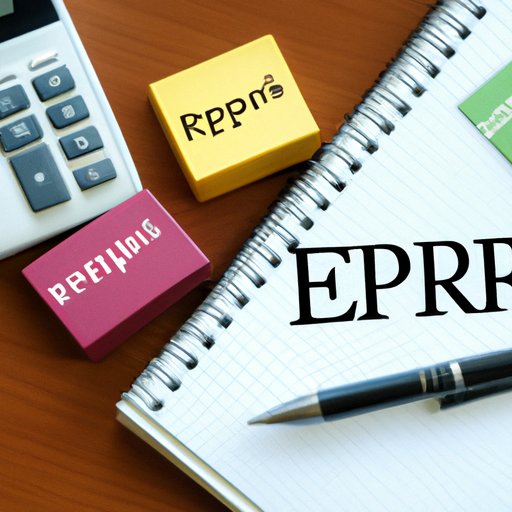
Introduction
In today’s fast-paced business world, many companies are turning to enterprise resource planning systems (ERP) to streamline their operations and increase their overall efficiency. This article aims to provide you with a thorough understanding of what enterprise resource planning systems are, how they work, and the benefits of implementing one in your organization. Whether you are a small business owner or a CEO of a large corporation, this guide will give you all the information you need to make an informed decision about whether an ERP system is right for your company.
The Ultimate Guide to Enterprise Resource Planning Systems: What They Are and Why Your Business Needs One
First, let’s define what enterprise resource planning systems are. Essentially, an ERP system is a software application that helps businesses manage and automate their day-to-day operations. This can include everything from financial management and supply chain management to human resources and customer relationship management.
The benefits of using an ERP system in your organization are numerous. For example, an ERP system can help you:
- Improve productivity and efficiency
- Streamline business processes
- Enhance collaboration across departments
- Reduce operating costs
- Improve communication
Real-world examples of businesses that have implemented ERP systems and seen positive results include well-known companies such as Procter & Gamble, Microsoft, and Nestle.
A Comprehensive Overview of Enterprise Resource Planning Systems: How They Work and What They Can Do for Your Business
So how exactly do ERP systems work, and what components and modules are typically included in these systems? Essentially, an ERP system integrates all the different functions and processes of your business into a single system. This allows you to manage your operations more effectively by giving you a 360-degree view of your business.
Typically, an ERP system will be made up of the following components or modules:
- Supply chain management
- Inventory management
- Financial management
- Order management
- Human resources
- Customer relationship management
- Business intelligence and analytics
ERP systems can perform many different functions, including automating routine tasks, generating reports, and providing real-time data that can be used to make better business decisions.
Understanding Enterprise Resource Planning Systems: The Benefits of Integrated Business Management
One of the major benefits of an ERP system is integrated business management. This means that all the different functions and processes of your business are connected and can be managed from a single system. This can help you achieve greater efficiency and productivity by eliminating the need for manual processes and reducing the potential for errors.
The benefits of integrated business management include:
- Improved visibility and transparency across departments
- Reduced duplication of effort
- Greater accuracy and consistency
- Increased agility and flexibility
- Better decision-making capabilities
Real-world examples of businesses that have experienced improved operations and increased productivity through integrated business management include companies like Dell, Toyota, and Samsung.
Navigating the World of Enterprise Resource Planning Systems: How to Choose the Right One for Your Organization
When it comes to choosing an ERP system, there are a few key considerations to keep in mind. Some of the factors you should consider include:
- The size and complexity of your organization
- Your budget and resources
- Your specific business needs and requirements
- The level of customization and flexibility you require
- The level of support and training provided by the vendor
Once you have chosen the right ERP system for your business, it is important to plan for a successful implementation. This may involve setting up a project team, defining objectives and timelines, and ensuring that all stakeholders are educated and engaged in the process.
From Data Management to Financial Control: Exploring the Features and Capabilities of Enterprise Resource Planning Systems
ERP systems offer a wide range of features and capabilities that can help you manage your business more effectively. For example, ERP systems can help you manage your data by providing real-time visibility into all aspects of your business.
ERP systems can also help you control your finances more effectively by providing you with a range of financial management tools, including:
- Accounts receivable and payable management
- General ledger
- Asset management
- Budgeting and forecasting
- Financial reporting and analysis
Real-world examples of businesses that have used ERP systems to improve their data management and financial control include companies like IBM, Coca-Cola, and Intel.
Conclusion
Enterprise resource planning systems have become an essential tool for businesses of all sizes and industries in today’s market. By integrating all the different functions and processes of your business into a single system, ERP systems can help you achieve greater efficiency, reduce costs, and make better business decisions.
When choosing an ERP system, it is important to consider your specific business needs and requirements, as well as your budget and resources. With the right ERP system and a successful implementation plan, you can take your business to the next level and stay competitive in today’s fast-paced business world.




